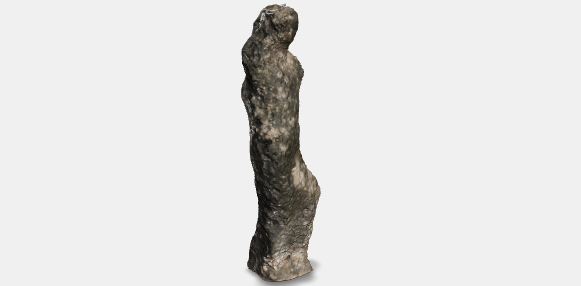The marble statue probably depicts the god Dionysius and was found in the waters of the port of Pozzuoli in 1964, though heavily damaged by a long exposure to the action of marine organisms.
His gentle and graceful position, the gestures and the whole figure refer to an ancient and fortunate model of Apollo Lyceus or Lyceus from Praxiteles, on display in the Athenian gymnasium and countlessly copied in Roman times, eventually representing also other gods.
The statue is heavily degraded and lost a great part of its sculptural plasticity due to a considerable bioerosion and abrasive action of the sediment. The morphology of the degradation, widespread on the entire surface of the artefact, allows for confirming that the statue remained uncovered for a long time, often changing its position due to the waves.
The surface shows signs of fouling of whitish colour caused by the epilithic development of benthic fouling organisms, as Thoracica (barnacles), Serpulidae (sea worms), Bryozoans, molluscs and encrusting red algae. The most evident signs of degradation are the ones produced by boring sponges that colonised the entire surface of the statue, whose presence is highlighted by circular perforations and sub-globular cavities, often confluent with each other. The attack of bivalve molluscs is also very visible and produced cavities on the outer side with oval and 8-shaped holes of various dimensions. Three species have been identified: Lithophaga lithophaga (often still present inside the holes), Rocellaria dubia (with the typical 8-shaped hole), and Petricola lithophaga.
Zevi F. (cur.) 2009, Museo archeologico dei Campi Flegrei. Castello di Baia. Napoli: Electa Napoli.



